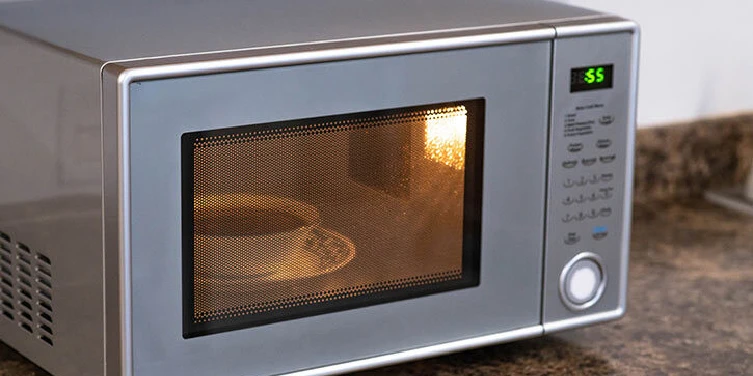Are Microwaves Safe or Dangerous?

When microwave ovens were first introduced in the late 1960s they revolutionized the way people reheat, defrost, and cook their food. While they were once considered a luxury item, they can now be found in nearly every home across the country. But like most modern conveniences it's important to learn all you can about how microwave ovens work and whether or not they are a safe alternative to more traditional cooking methods. Read on to learn all you need to know about the potential dangers of microwaves and what impact they may have on your health, from the team of experts at Mr. Appliance®.
What Are Microwaves?
Microwaves are high-frequency radio waves which are a type of electromagnetic radiation. They are used for a number of applications including radar, television and telephone telecommunications, and during the manufacturing and processing of a variety of different products. The most common use in the private sector is with microwave ovens, but even though they produce a type of manmade radiation it's not the type that most people need to worry about.
Radiation can be divided into two distinct categories:
Ionizing
- Short wavelengths
- Produces high energy
- Used for x-ray and gamma-ray technology
- With sufficiently high doses, they can damage molecular structure
Non-Ionizing
- Longer wavelengths
- Low energy
- Unable to break chemical bonds
- Used in microwave technology
How Do Microwave Ovens Work?
Once the oven has been switched on, microwaves are produced and dispersed throughout the interior of the appliance with help from a stirrer fan. The waves are reflected off the metal walls and absorbed by the food, and they have the ability to pass through containers made from glass, plastic, paper, and ceramic. The energy from these waves causes any water that is present in the food to vibrate, which produces the heat that cooks it.
Are Microwaves Safe?
When used correctly and in accordance with manufacturers guidelines, microwave ovens can safely be used to reheat, defrost, and cook your food. However, there are a number of considerations that must be taken to reduce the risks of exposure, nutrient loss, and/or injury including:
Choice of Container
Opt for microwave-safe containers that are made from materials that don't contain water, which can prevent the waves from reaching your food. Metal should be avoided as it can not only block the waves but also create sparks and start a fire. Plasticware containing BPA or phthalates should also be avoided as heat may leach these harmful chemicals into your food.
Age/Condition
Microwave ovens are designed to prevent leakage, but one which is dirty, damaged, or poorly maintained may allow microwave energy to escape. Fortunately, thermal damage is only likely to occur after prolonged exposure at very high levels, and not at the low levels typically found around this appliance.
Heat Damage or Injury
The biggest risks associated with microwave ovens are burns and fire. Foods cooked inside a microwave can become super-heated, causing burns during handling or consumption. Items such as popcorn which are left unattended may catch fire, threatening the safety of your home and family.
Food Safety
Cooking food in the microwave doesn't reduce its nutritional value, but problems may occur from attempting to cook thicker items as the microwave energy may not be able to reach the centre of the food.
Ensure your microwave and other appliances are operating at peak performance with expert, reliable repair services from Mr. Appliance. Contact us online or call to schedule an appointment today.


